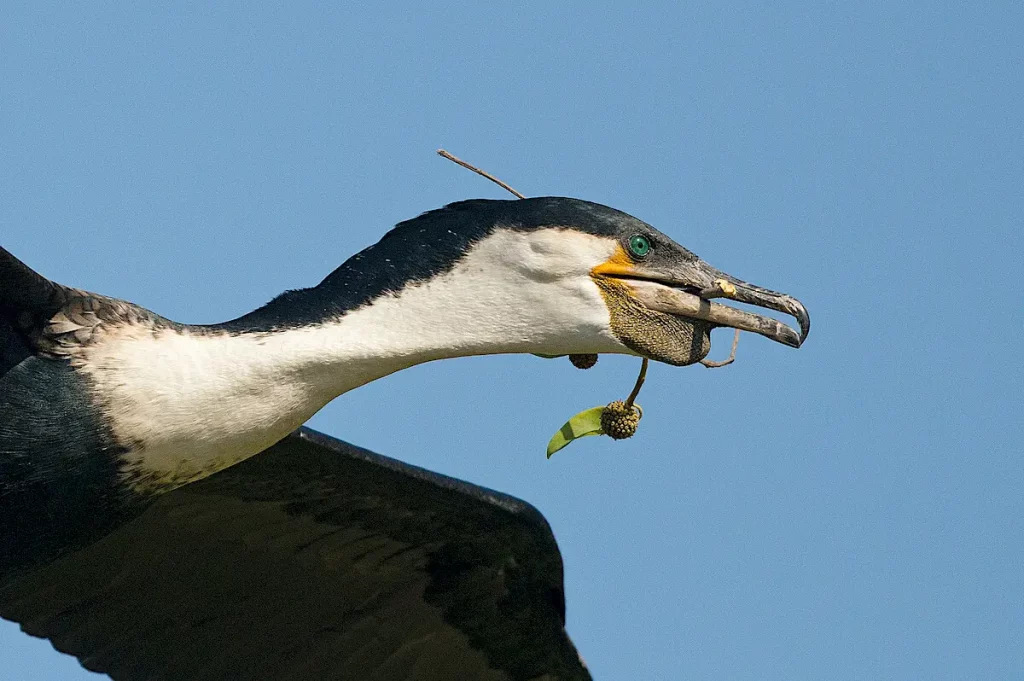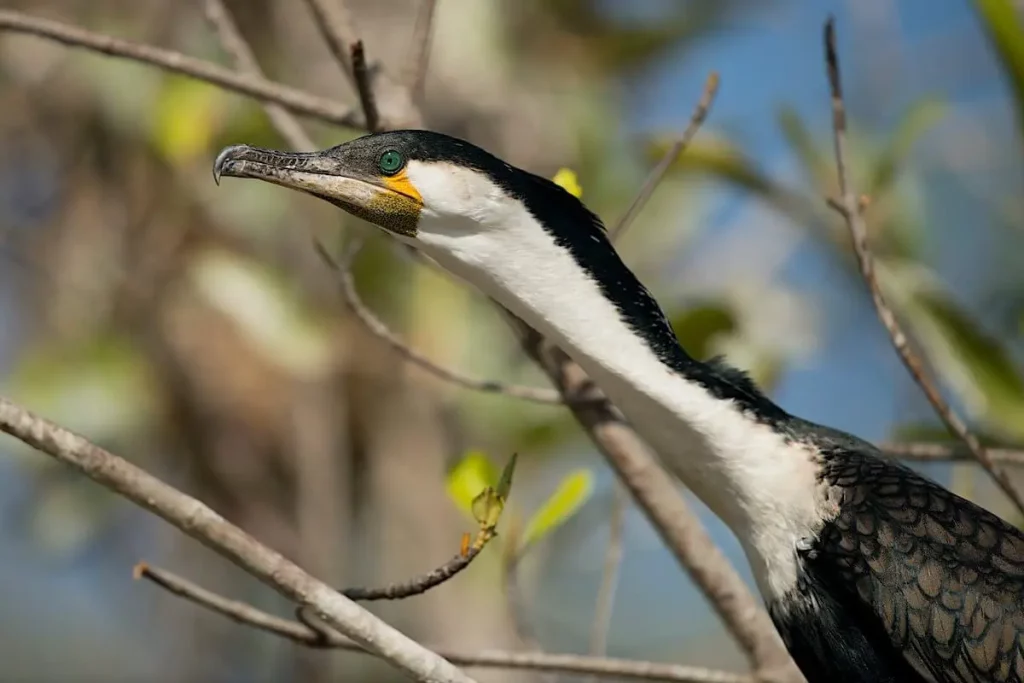The Great Cormorant is also a great fisherman. Often seen by locals as a major competitor for fish because not only are they great fishermen but also can eat as much as they catch. This big bird can stay underwater circa half a minute and dive to over five metres. Found just ten minutes from our lodge, they often nest in colonies near wetlands.
Pairs will use the same nest site to breed year after year. They construct their nest in trees from sticks.
Where is the Great Cormorant found?
You won’t see this big bird inside Footsteps but you will find it at the wetlands just ten minutes walk away or indeed at the beach. See our Guided bird-watching trips.
In Gambia this big bird is widespread wherever there is water and fish.
What does it look like?
The Great Cormorant varies in size ( 80-100cm ) and weight depending on variations in its species. Generally, the males are bigger than females and weigh between two and five kilos. Mostly black with white under the neck. They have a distinctive yellow flash just below their strikingly green/blue eyes.
What does it feed on?
The great cormorant feeds on fish caught through diving.
Want to know an interesting Factoid?
Cormorant fishing is practised in China, Japan, and elsewhere around the globe. In this practice, fishermen tie a line around the throats of cormorants, tight enough to prevent them from swallowing the larger fish they catch and deploy them from small boats. Source Wikipedia.
How does it sound?
Great Cormorants usually don’t make any noise, however, while in their breeding colonies they make a range of guttural noises.


